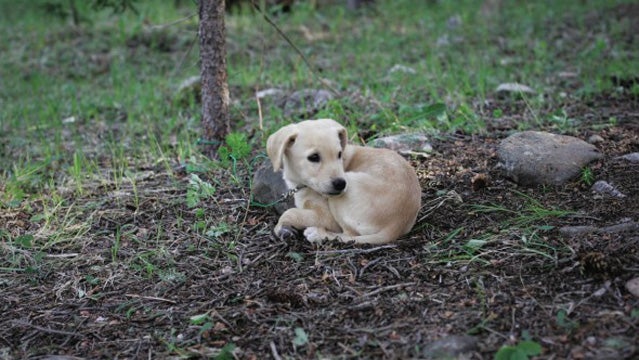Time for our young Cooper to learn the fundamentals of steadiness and stillness, patience and quietness. Place is a concept we teach early at Wildrose. This is where we teach a dog to tie out* quietly and stay calmly in a specific spot. These skills are the foundation for a dog that’s civil at home, on the trail, or in the field. Pups as young as three months can grasp the concept of place.
The Ultimate ���ϳԹ��� Companion
All you need to know about going wild with man’s best friend.Place teaches dogs to remain still in a particular defined location—a dog box, a roll-up mat, or a platform. Grayson Schaffer never fully understood this with his dog Danger. He wanted to know when there was a time for the dog to be aimlessly roaming the house. Short answer: never. Place training is how we get the dog to want to stop roaming. Once the place habit is entrenched, pups will enjoy the comfort and security of a place just for them, the same way they fondly regard their crate. When the pup is in place, they may move about freely, sitting, lying about in any position as long as he doesn’t leave that mat.
Other reasons we take place training so seriously:
1. It reduces potential territorial dominance problems.
2. It makes travel convenient.
3. Our dogs remain relaxed and quiet at fireside on the mat in camp.
4. In a kayak, canoe, or raft, the dog must remain calm for his safety and yours.
5. When hunting, our dogs must remain still and quiet, either in a blind or on a dog stand.
HOW WE TEACH PLACE
1. Get a mat—a dog bed, a dog mat, a piece of carpet, or a crate pad, something comfortable. We’ve been using these from Mud River, lately.
2. Introduce the mat. Have the puppy walk over the mat or bed. When your pup is on his mat, give the sit command and then a release command like “out” or “off.” Repeat this until he’s readily going onto the mat and sitting calmly and then releasing on cue. Now add the command “load” or “place” for the linked behavior of going onto the mat and sitting. Encourage the pup to hop onto the “place” with a treat.
3. Place the pup on the mat beside your chair. Now sit down by the student, lead in hand. Without a word, ignore the pup and begin to watch TV or read. If the pup is quiet a calm “good dog” is in order. Just don’t overexcite the pup and lose the tempo and control of the moment.
4. If your pup decides to exit the mat, redirect the youngster back to the mat with the lead and your “place” command. As the pup begins to stay longer without fussing, reward him with a little treat. Treat him for breaking his own personal best record, but don’t get in the habit of paying him to stay. Some dogs will continue to work for the treat. Others will get frustrated or think the drill has ended. The idea here is to build a habit that’s independent of reward. The dog stays because it’s all he knows how to do. Soon, our student will relax, lie down, and go to sleep. The process of place training has begun.
5. As we progress, we teach our youngster to stay on the mat as we move away. In time, it will become easy to move completely out of sight without attention barking. Deke, the Ducks Unlimited mascot, was totally place trained at home by the time he was six months old. I can get up and move about the house, but he’s going to stay put unless I ask him to move.
Raising a puppy isn’t easy. A young dog will want to play and run and nip. Keeping yourself from giving into those behaviors isn’t easy. Everybody loves to play with a cute puppy. But if you can keep your dog calm and build focus early on, that temperament will last a lifetime.
*A word on tying out your dog: Tying out your dog can be very dangerous, so exercise the utmost caution when you do it. Don’t tie out your dog on a deck, where he can fall off and hang himself. Never tie out a young pup when other dogs are loose nearby unless you want your pup to become a canine tetherball. Never go beyond earshot when your dog is tied. Tying out quietly is an important skill for dogs, whether you’re leaving them outside a coffee shop, tying them away from the food in camp, or travelling cross-country with an eight-dog trailer the way we do. Tying is not a subsititute for a secure kennel or fenced yard. Tying your dog out as a regular means of confinement is inhumane.
This article originally appeared on ���ϳԹ��� K9, the former dog blog of ���ϳԹ��� magazine, on June 9, 2009.


